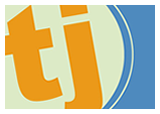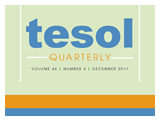Here is some of the most-read content from TESOL for 2022. Find out what your colleagues have been reading and learning. What great ideas or research might you have missed that you can use in your classroom, your teaching, or your professional development in 2023?
TESOL Press
TESOL Press supports excellence in the field of English language teaching through a full range of publications. TESOL authors are leading experts in the field and include experienced researchers, classroom teachers, and students.

-
The 6 Principles for Exemplary Teaching of English Learners®, by TESOL International Association
-
Social-Emotional Learning in the English Language Classroom: Fostering Growth, Self-Care, and Independence, by Luis Javier Pentón Herrera and Gilda Martinez-Alba
-
The 6 Principles® Quick Guide for Paraeducators, by Elizabeth Amaral
-
Supporting English Learners with Exceptional Needs, by Patricia M. Doran, Amy Noggle, Heather Wayson Wilson, and June Lucas Zillich
-
Engaging Online Language Learners: A Practical Guide, By Faridah Pawan, Sharon Daley, Xiaojing Kou, and Curtis J. Bonk
-
Teacher Leadership for School-Wide English Learning, by Michelle Benegas and Amy Stolpestad
-
Beyond Repeat After Me: Teaching Pronunciation to English Learners, by Marla Yoshida
-
More Than a Native Speaker: An Introduction to Teaching English Abroad (Third Edition), by Don Snow and Maxi-Ann Campbell
-
The 6 Principles for Exemplary Teaching of English Learners®: Young Learners in a Multilingual World, by Joan Kang Shin, Vera Savic, and Tomohisa Machida; edited by Andrea B. Hellman
-
TESOL Zip Guide: Essentials for Engaging Families of English Learners, by Debbie Zacarian
TESOL Connections
![]() TESOL Connections publishes
useful, practical articles for classroom teachers, resources for English
language educators, and news affecting the association.
TESOL Connections publishes
useful, practical articles for classroom teachers, resources for English
language educators, and news affecting the association.
-
If We Must Label Language Learners: EL vs. MLL, by Raichle Farrelly
-
Fun Ways to Assess Speaking, Elif Yasin Holocsi
-
Beyond Flashcards: 3 Activities to Practice Academic Vocabulary, by A. C. Kemp
-
Make It Stick: Speaking Corrections That Stay With Students, by Alice Llanos and Amy Tate
-
Practical Strategies for Culturally Relevant Lessons for ELs, by Chih-Hsin Hsu
-
Meet Meg Eubank: 2022 TESOL Teacher of the Year, interview by Fares J. Karam
-
Teaching Listening: Practical Strategies That Work, by Jon Phillips and Federico Pomarici
-
8 Tips for Refreshing Assignment Guidelines, by Ilka Kostka and Cristine McMartin-Miller
-
6 Self-Editing Strategies for L2 Writers, by Amy Cook
-
Creating Simple, No-Code Games to Facilitate Online Learning, by Connie Gelb
TESOL Blog
The TESOL Blog is written by TESOL professionals; it provides readers with news, information, and updates on the latest research, effective classroom practices, and peer-to-peer advice on classroom technology, lesson plans, and other practical topics in the field of English language education.
-
8 Strategies for Teaching Math to English Learners, by Judie Haynes
-
4 Activities to Practice Simple Past and Present Perfect, by AC Kemp
-
Activities for Teaching Writing to Young Learners, by Betsy Gilliland
-
6 Tips for Teaching Impromptu Speaking, by A. C. Kemp
-
4 Games to Incorporate Social Justice Into Your Classroom, by Jeff Kuhn
-
3 Tech Tools for Teaching Vocabulary, by Hetal Ascher
-
“Literacy” vs. “Reading”: 3 Questions to Consider This Fall, by Spencer Salas
-
5 Ways to Use Padlet as an Icebreaker, by Brent Warner
-
Supporting Muslim Students During Ramadan: 4 Suggestions for Teachers to Consider, by Naashia Mohamed
-
AI for Language Learning: ChatGPT and the Future of ELT, by Brent Warner
TESOL Journal
 TESOL
Journal (TJ) is a double-blind peer-reviewed,
practitioner-oriented electronic journal that publishes articles based on
current theory and research in the field of English language teaching.TJ is a forum for second and foreign language
educators at all levels to engage in the ways that research and theory can
inform, shape, and ground teaching practices and perspectives.TJ is free for TESOL members.
TESOL
Journal (TJ) is a double-blind peer-reviewed,
practitioner-oriented electronic journal that publishes articles based on
current theory and research in the field of English language teaching.TJ is a forum for second and foreign language
educators at all levels to engage in the ways that research and theory can
inform, shape, and ground teaching practices and perspectives.TJ is free for TESOL members.
-
Teaching about Indigenous peoples in the EFL classroom: Practical approaches to the development of intercultural competence, by Helen Margaret Murray
-
The Other Third Culture Kids: EAL Learners' Views On Self-Identity, Home Culture, And Community In International Schools, by James Spencer
-
Co-constructing a critical ELT curriculum: A case study in an Indonesian-based English language teacher education program, by Joseph Ernest Mambu
-
A comparison of integrated and designated ELD models on second and third graders' oral English language proficiency, by Emily R. Edelman, Samira A. Amirazizi, Daniel K. Feinberg, Matthew Quirk, Jennifer Scheller, Carlos R. Pagán, Jamie Persoon
-
A Flipped Classroom Model to Improve Students’ Online EFL Learning, by Kiki Juli Anggoro, Uswatun Khasanah
-
“You don't actually experience it until you're actually in it”: A translanguaging simulation for preservice teachers, by Woongsik Choi, Hyunsil Park, Virak Chan
-
Levels of textual cohesion and the meaning-construction process of advanced second language readers, by Zeynep Bilki, Lia Plakans
-
Multilingual students' perspectives on translanguaging in first-year undergraduate writing classrooms, by Qianqian Zhang-Wu
-
Ten years later: Reexamining the TESOL Technology Standards for Language Teachers, by Xiaorui Sun
TESOL Quarterly
 TESOL
Quarterly, a refereed professional journal, fosters
inquiry into English language teaching and learning by providing a forum for
TESOL professionals to share their research findings and explore ideas and
relationships in the field. Members of TESOL may subscribe to TESOL Quarterly.
TESOL
Quarterly, a refereed professional journal, fosters
inquiry into English language teaching and learning by providing a forum for
TESOL professionals to share their research findings and explore ideas and
relationships in the field. Members of TESOL may subscribe to TESOL Quarterly.
-
How Does Creativity Affect Second Language Speech Production? The Moderating Role of Speaking Task Type, by Shungo Suzuki, Toshinori Yasuda, Keiko Hanzawa, Judit Kormos
-
How Does Having a Good Ear Promote Instructed Second Language Pronunciation Development? Roles of Domain-General Auditory Processing in Choral Repetition Training, by Yujie Shao, Kazuya Saito, Adam Tierney
-
Google Translate and Biliterate Composing: Second-Graders' Use of Digital Translation Tools to Support Bilingual Writing, by Lindsey W. Rowe
-
Differences in the Intensity and the Nature of Foreign Language Anxiety in In-person and Online EFL Classes during the Pandemic: A Mixed-Methods Study, by Pia Resnik, Jean-Marc Dewaele, Eva Knechtelsdorfer
-
Life Capital: An Epistemic and Methodological Lens for TESOL Research, by Sal Consoli
-
Digital Storytelling With Youth From Refugee Backgrounds: Possibilities for Language and Digital Literacy Learning, by Maureen Kendrick, Margaret Early, Amir Michalovich, Meena Mangat
-
Teacher Identity (re)Construction in Collaborative Bilingual Education: The Emergence of Dyadic Identity, by Kenan Dikilitaş, Vahid Bahrami
-
EFL Learners' Receptive Knowledge of Derived Words: The Case of Swedish Adolescents, by Per Snoder, Batia Laufer
-
Transnational Mexican Youth Negotiating Languages, Identities, and Cultures Online: A Chronotopic Lens, by Wan Shun Eva Lam, Martha Sidury Christiansen
-
Autonomy in the Digital Wilds: Agency, Competence, and Self-efficacy in the Development of L2 Digital Identities, by Yiting Han, Jonathon Reinhardt
Is your favorite TESOL book, article, or blog not on this list? Please share! Link to it in the comments, below.
Happy reading!
| Next Article |
